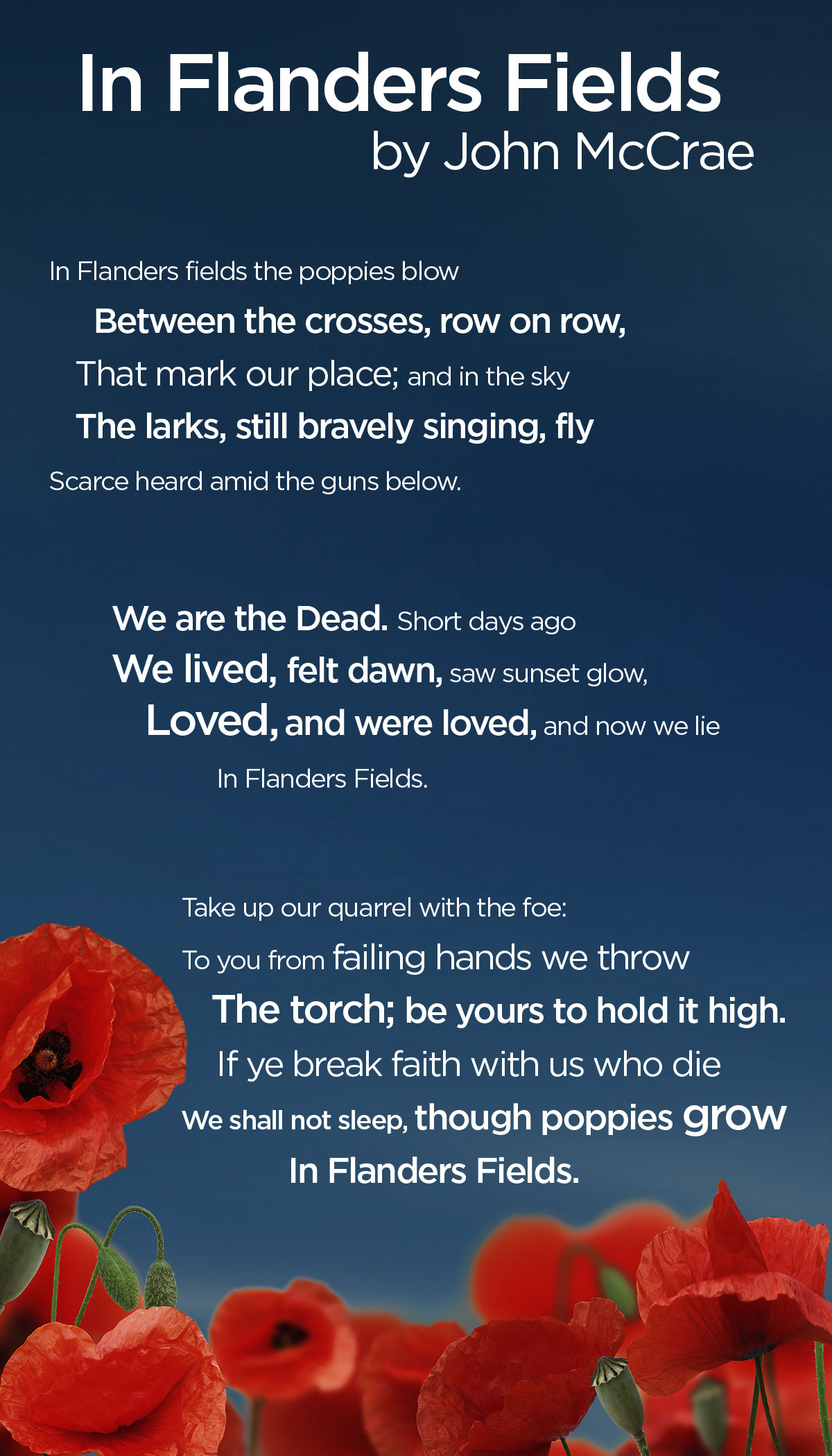More Canadians may be donning the poppy this year. Searches for the Remembrance Day symbol are at their highest ever, according to Google Canada.

But judging by what people are searching, some seem unsure about the significance of the poppy and where poppy proceeds go.
So we thought we’d answer the most popular questions here to make sure you’re fully up to speed by Nov. 11.
But first, why Nov. 11? For those also in need of a little history refresher, it’s the day that Allied and German forces stopped fighting World War I in 1918.
Remembrance Day (or Veterans Day in the U.S.) is sometimes referred to as Armistice Day because the armistice was signed then. It went into effect at 11 a.m. Paris time.
Now, on to your poppy questions.
What side do you wear a poppy?
The poppy is traditionally worn on the left lapel, or as close to the heart as possible.
Why do we wear a poppy?
We wear a poppy to remember the contribution and sacrifice of our veterans.
- Trudeau tight-lipped on potential U.S. TikTok ban as key bill passes
- Canadian man dies during Texas Ironman event. Her widow wants answers as to why
- Hundreds mourn 16-year-old Halifax homicide victim: ‘The youth are feeling it’
- On the ‘frontline’: Toronto-area residents hiring security firms to fight auto theft
The tradition was started in 1918 by American Moina Michael. She was so moved by John McCrae’s now-iconic Canadian poem In Flanders Fields, that she wrote a poem in response to it.
It was titled We Shall Keep Faith and goes like this:
Oh! you who sleep in Flanders Fields,
Sleep sweet – to rise anew!
We caught the torch you threw
And holding high, we keep the Faith
With All who died.
We cherish, too, the poppy red
That grows on fields where valor led;
It seems to signal to the skies
That blood of heroes never dies,
But lends a lustre to the red
Of the flower that blooms above the dead
In Flanders Fields.
And now the Torch and Poppy Red
We wear in honor of our dead.
Fear not that ye have died for naught;
We’ll teach the lesson that ye wrought
In Flanders Fields.
Canada first adopted the poppy in 1921. An estimated 18 million poppies are now distributed across the country and overseas in places like the United Kingdom, Australia and New Zealand.
It’s usually worn from about the last Friday in Oct. to the end of the day on Nov. 11.
What does the poppy mean?
It represents a pledge to never forget those who died serving our country.
The flower bloomed across some of the worst battlefields of Flanders in World War I. Its colour became a symbol for the blood spilled in the war.
Navigate the map below to read what the poppy means to Canadians across the country:
How do you keep a poppy from falling off?
There are ways to prevent poppies from falling off.
“Poppy keepers” are one option. They’re small plastic tubes that attach to the back, and are available at most legion branches.
There is another option, said Cherilyn Cooke of the Royal Canadian Legion Saskatchewan Command.
“Say, ‘Sis, I need to borrow your earrings for a minute,’ grab the backing off it and that’s exactly what will work.”
But, whatever you do, don’t put anything in front of the poppy.
Even a Canadian flag pin is considered inappropriate, according to the legion.
Where does the poppy money go?
WATCH: Donations made to poppy funds serve an important service. Lisa Wolansky explains.
The money donated through the poppy campaign goes towards veterans and their families in need. Proceeds help with everything from “food, heating costs, clothing, prescription medication, medical appliances and equipment, essential home repairs and emergency shelter or assistance,” according to the Royal Canadian Legion.
Last year, the Legion raised $16.5 million in donations by distributing poppies.
READ MORE: ‘There’s a great need’ for poppy fund services
Searches for Remembrance Day poems are also on the rise, including In Flanders Fields.
An Ipsos poll conducted on behalf of the Vimy Foundation found that while 76 per cent of Canadians could correctly identify In Flanders Fields as a Canadian poem written during the First World War, only 30 per cent could correctly identify the first verse.
Here it is in its entirety:
With files from Steve Silva, Ryan Kessler, Andrew Russell and Irene Orgrodnik, Global News


Comments